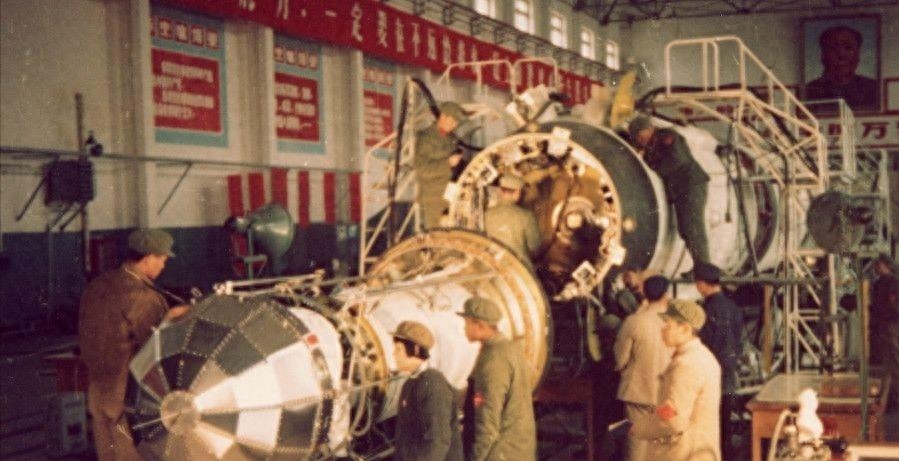Dongfanghong-1 is still in orbit, can we use a robotic arm to take it home? One key equipment is still missing
The content of this article comes from the internet. If it does not match the actual situation or there is infringement, please contact to delete it
The content of this article comes from the internet. If it does not match the actual situation or there is infringement, please contact to delete it. This article only debuted on today's headlines, please do not move it.
In the silence of space, there is a Chinese pride hidden, which is China's first artificial satellite - "Dongfanghong-1". She successfully launched on April 24, 1970, becoming an important milestone in China's aerospace history. However, surprisingly, even after a full 51 years, Dongfanghong-1 is still in orbit and has become the world's longest lived artificial satellite.

Dongfanghong-1 "is a huge satellite, heavier than the sum of the first satellites launched by the Soviet Union, the United States, France, and Japan, reaching 173 kilograms. Her track height and inclination are also the largest. Although this satellite has been floating in space for over half a century, it still maintains astonishing stability.

The operational status of this satellite can be described as exceptionally stable. She orbits the Earth in an elliptical orbit, with a perigee of approximately 441 kilometers and an apogee of 2368 kilometers. This orbit has a period of approximately 114 minutes and an inclination of 68.44 degrees. Although she had already exceeded the operating limit for 28 days, and her batteries and electronic devices had already failed, making it impossible to play the song "Oriental Red" again, she did not crash into the atmosphere and burn down like the first artificial satellite in other countries.

The reason why Dongfanghong-1 can live so long is partly due to its huge size and sturdy structure. This allows her to resist various extreme conditions in space, such as cosmic rays and small impacts. In addition, although the lifespan of her batteries and electronic devices has expired, the satellite itself remains in good condition, which is impressive.

Faced with such a long-lived satellite, many people have raised an interesting question: is it possible to use a robotic arm to grab "Dongfanghong-1" and bring her back to the ground, or to replace her battery so that she can continue playing "Dongfanghong-1" music?

In fact, based on the current level of technology, this task is not impossible, but it also faces some challenges. Firstly, we can use reusable spacecraft similar to small space shuttles to approach Dongfanghong-1. Another method is to extend a space robotic arm, but to truly grasp this satellite, we need a critical equipment - a 'robotic arm'.

The "robotic arm" is similar to the "Canadian hand" and is a robot that can simulate the five fingers of a human hand, with excellent flexibility and grasping ability. This device enables the robotic arm to operate more flexibly without the need for specific interfaces, more like a human hand, capable of completing various tasks, including repair and maintenance work.

At present, China is also actively developing "robotic arms", or can be referred to as "space spiders". This device can be used in conjunction with a space robotic arm to perform delicate tasks such as assembly, maintenance, and satellite grasping. Although the concept of 'space spider' is still in the pre research stage, it provides exciting prospects for future space missions.

For space robotic arms, the "robotic arm" or "space spider" is a crucial link, enabling them to complete complex tasks, whether it is repairing satellites or performing assembly work. This concept brings great opportunities for future space exploration and utilization, and also makes people yearn for the possibility of bringing the "Dongfanghong-1" spacecraft back to Earth.

Although this task still faces many technical and engineering challenges, with the continuous development and innovation of technology, we are confident in achieving this goal. In the future, we may truly be able to reignite the music of "Dongfanghong-1" and transmit her voice to a new generation.

The longevity of the "Dongfanghong-1" spacecraft can be considered a miracle in the space industry. It has witnessed the rise of China's aerospace industry and also stimulated more scientific exploration and technological innovation. Regardless of whether she ultimately succeeds in capturing her, she will always remain in our history and become a legend of China's aerospace industry.

The above content and information are all sourced from the internet. The author of this article has no intention of targeting or alluding to any real country, regime, organization, race, or individual. The relevant data and theoretical research are based on online materials. The above content does not mean that the author agrees with the laws, rules, opinions, behaviors, and is responsible for the authenticity of the relevant information in the article. The author of this article is not responsible for any issues arising from the above or related matters, nor assumes any direct or indirect legal responsibility.
Disclaimer: The content of this article is sourced from the internet. The copyright of the text, images, and other materials belongs to the original author. The platform reprints the materials for the purpose of conveying more information. The content of the article is for reference and learning only, and should not be used for commercial purposes. If it infringes on your legitimate rights and interests, please contact us promptly and we will handle it as soon as possible! We respect copyright and are committed to protecting it. Thank you for sharing.(Email:[email protected])















